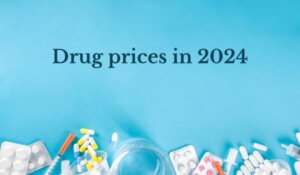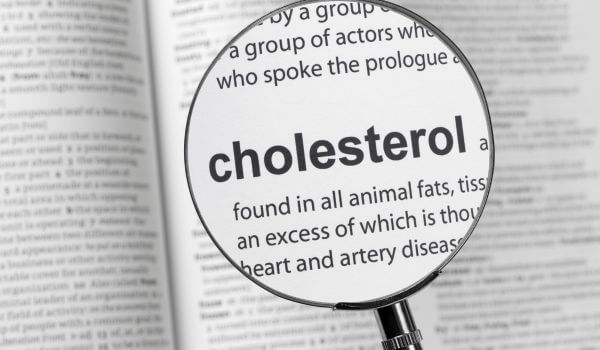
Complaints about the high prices of prescribed drugs in the US are a common theme in our conversations with customers. There is a great deal of frustration around the pricing of prescription medicines, understandably so. This post highlights three of the most common areas of concern among health consumers regarding drug prices.
Why is there so little progress in getting a reduction in retail prices of prescribed drugs in the US?
- The US federal administration has promised to tackle this problem and has even initiated several programs and policy changes to make pharmaceutical products more affordable. However, the success of these initiatives varies, and their effect in lowering drug prices has had very little impact on the consumer.
- The key programs that the administration has been working on would allow Medicare to negotiate drug prices directly with pharmaceutical companies, especially for high-cost drugs without generic or biosimilar competition. People express concerns that this will mainly benefit the insurers themselves without guaranteeing that the lower costs will be fully passed on to them.
- There have also been efforts to allow the importation of prescription drugs from other countries, where they are often cheaper (see also point three below.) In this respect, we can fly our flag high since we have grown over the years to be a major source of affordable drugs for our 45,000+ customers.
- People have grown used to the upward trend in prices of prescribed drugs, but the rate of increase has become the main bone of contention. Although there was some moderation in price hikes over the last five years, significant reductions in the rate have been uncommon. Generally, prescription drug prices have continued to rise, but possibly at a slightly slower pace, thanks to policy pressures and public scrutiny.
- Where there has been progress, the effectiveness has been mixed due to legislative hurdles, industry resistance, and implementation challenges. The current federal administration’s efforts to reduce drug prices represent steps in addressing a complex issue and are facing obstacles.
Why can’t changes in the prices of prescribed drugs be capped to the inflation rate?
- This is one of the main complaints of both the general public and of people with experience in the effects that high drug prices are having on the general health of the public. At least, if changes in drug prices were keeping pace with household income (and not outstripping it as at present), people wouldn’t be falling further and further behind each year.
- Over the past decade, the annual rate of increase in the prices of prescribed drugs has consistently outstripped the rate of general inflation. This means that drug prices have been growing faster than wages and household income and becoming less and less affordable. While the excesses seen in the mid-2010s have been substantially controlled, the rate is still worrying, especially now that general inflation rates have skyrocketed. For comparison, in 2014, the worst year on record for overcharging, inflation was around 1.6%. Still, according to calculations (note 1), the average annual drug price change increased by a mind-boggling 13.8%. By 2020, the gap had been narrowed (2.9% price increase against 1.3% inflation), but general inflation rates have increased substantially since then. Over the next few years, the best estimates are of inflation at a rate of 6%-8%, so applying the improved ratio that was achieved in 2020 would mean that prices of prescribed drugs could go up by around 15% to 20% each year for the next few years – a frightening prospect!
- The most significant change in 2023 was the passing of the Inflation Reduction Act (IRA). IRA allows Medicare to engage in drug price negotiation with selected manufacturers. It will also penalize drug manufacturers that increase prices at a rate greater than the inflation rate. Inflationary rebates are nothing new in the drug pricing world. The difference between the IRA and the older (circa 1993) Medicaid Drug Rebate Program (MDRP) is that the Federal government will now get these protectionary rebates into Medicare alongside rebate negotiations by pharmacy benefit managers.
- Due to the increased rate of general inflation, drug manufacturers face higher business costs. Labor, materials, and, most importantly, interest costs are all up, putting pressure on the companies’ bottom line. So – while “past indicators are not predictors of future events,” it’s reasonably certain that there will be intense pressures on drug manufacturers to raise prices substantially over the next two to three years, and almost undoubtedly little chance that they will actually fall.
- A significant concern for state and federal healthcare systems managers is the sad fact that nearly one in three patients are not buying their prescribed medications, primarily due to the cost. As we wrote before, a public opinion survey about legal control of drug prices supplied by insurance companies revealed that two-thirds of participants agreed that laws limiting typical medication prices should be passed. The main effect of such a deal would be to lower the cost of drugs to the insurance companies themselves, not necessarily to the patients, and overlook completely the 30 million Americans without health insurance.
Is there a way to buy quality prescription medications from overseas?
- Most of us know that the prices for most pharmaceutical medications in the US far outstrip the equivalent prices charged in most of the advanced countries in the rest of the world. What many people need to know is that the gap between US retail drug prices and what people in other countries pay is growing every year. Our survey of the 10 most popular drugs on our website showed why it pays for you to shop for prescription medications from us – giving you 50% plus savings compared to retail pharmacy prices in the US.
| Drug | Dose | US Retail price | IsraelPharm price |
|---|---|---|---|
| Eliquis | 2.5mg x 56 tablets
5mg x 56 tablets |
$535
$570 |
$113
$113 |
| Xarelto | 10mg x 10 tablets
15mg x 28 tablets 20mg x 28 tablets |
$225
$515 $515 |
$26
$76 $76 |
| Vagifem | 10mcg x 24 suppositories | $550 | $64 |
| Ozempic | 1 x prefilled pen | $950 | $550 |
| Jardiance | 10mg x 30 tablets
25mg x 30 tablets |
$580
$580 |
$86
$86 |
| Vortioxetine | 5mg x 28 tablets
10mg x 28 tablets 20mg x 28 tablets |
$410
$410 $410 |
$47
$83 $137 |
| Myrbetriq | 25mg x 30 tablets
50mg x 30 tablets |
$395
$395 |
$101
$79 |
| Prolia | 60mg x 1 vial | $2,400 | $480 |
| Xgeva | 120ml/1.7mg x 1 vial | $6,430 | $687 |
Note 1: Data comes from the AARP Public Policy Institute and the PRIME Institute, University of Minnesota, based on data from IBM MarketScan Research Databases based on 260 drug products most widely used by older Americans.
















